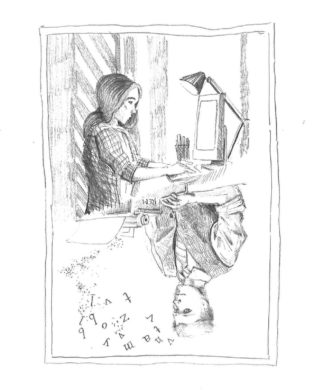By Lindsey Nguyen, Staff Writer
 So you walk into your English class and your teacher has just assigned you to write a flash fiction. They pull down the screen, turn on the projector and give you a weird example of a flash fiction piece that was supposed to blow your mind. Now you’re stuck, absolutely clueless and you just don’t know what to do. Don’t worry, I’m here to help.
So you walk into your English class and your teacher has just assigned you to write a flash fiction. They pull down the screen, turn on the projector and give you a weird example of a flash fiction piece that was supposed to blow your mind. Now you’re stuck, absolutely clueless and you just don’t know what to do. Don’t worry, I’m here to help.
Step One: Build a base
What is the main thing you want to project in your story? Do you want a specific theme or message? In Grace Paley’s story, “Mother,” she wraps around the message of how you should appreciate your mother, or family, because they won’t always be there for you. So, figure out a theme and use it as your base.
Step Two: Plan your disguise
This isn’t a child’s storybook so let’s not try to physically tell the readers the messages and symbols. Like a good writer, hide it within your story through their actions and thoughts. For example, in Alice Walker’s story of “The Flowers,” Myop, who had been picking flowers in the summer morning, strays a little further from the path. She comes across a decaying body of a lynched man and “the summer was over” (Walker). The hidden symbol is that the summer represented her innocence. The decaying body is the evil in the world that ends her “summer,” or innocence.
Step Three: Cut the fluff
If you want to describe in detail of how the boy had gotten up in the morning with his scruffy hair and drowsy expression then flash fiction isn’t for you. However, you still need to do the assignment. If you ever do write fluff, just condense it or get rid of it while editing. Imagine fluff as that one random item in your room that’s taking up way too much space for no reason; it doesn’t have any value, but you just can’t seem to part from it. You just need to get rid of it.
You’re set! Besides from the basic criteria and obvious suggestions of writing flash fiction, that should be all you need to push through that very short writing piece.





